|
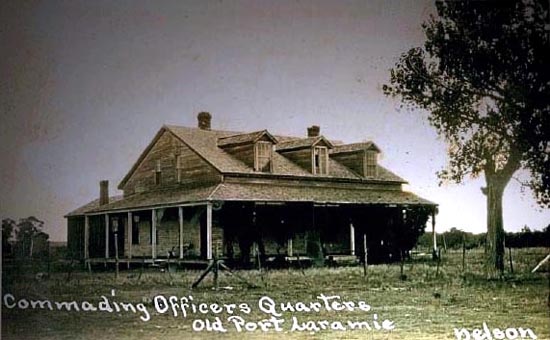
Commanding Officers Quarters, 1930.
Compare with photo on a previous page.
In 1891, the fort was abandoned. Over the next 47 years until 1937, the fort fell into decline.
In 1914, Nebraska historian Addison Sherton described the site of the fort:
A few of the old buildings are used by five or six families who still live at the old place.
The old guard house or military jail where prisoners were kept is used as a horse stable.
Roofless buildings and crumbling walls are everywhere. Deep gullies over the hills mark the
route of the Oregon Trail. A tiny white schoolhouse stands near the corner of the old parade
ground, now grown over with grass, and a dozen school-children now laugh and play where once
the soldiers marched at command. The dead are gone from the graves on the hillside to rest in
the cemetery at Fort McPherson.
By 1915 only 22 buildings remained, many in a state of ruin.
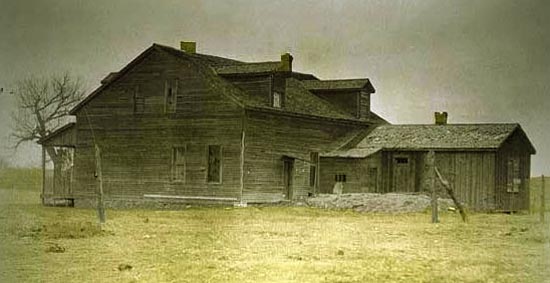
Commanding Officers Quarters, 1939.
In 1915 interest in the historical
significance of the fort began to grown with the dedication of an historical marker attended by
Dr. Grace R. Hebard and former Governor Joseph M. Carey. Dr. Hebard (1861-1936), herself, occupies a
significant place in Wyoming history as a civil engineer, trustee of the University of Wyoming,
historian, first woman attorney in the state, and professor of political science. Through her
work the Oregon Trail was marked. She was responsible for much of the work on the life of
Sacagawea.
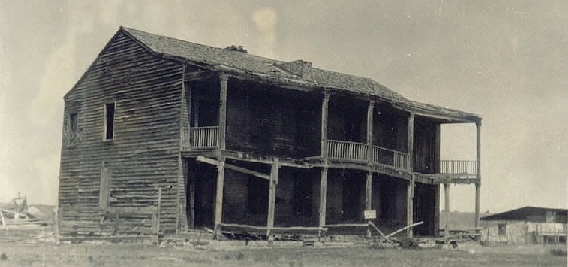
Fort Laramie's "Old Bedlam," prior to restoration, 1907.
Old Bedlam was constructed in 1849 as the bachelor officers quarters ("B.O.Q.").
Interest in preservation of the fort was prompted in part by the efforts of
of John Hunton, the last
post trader.
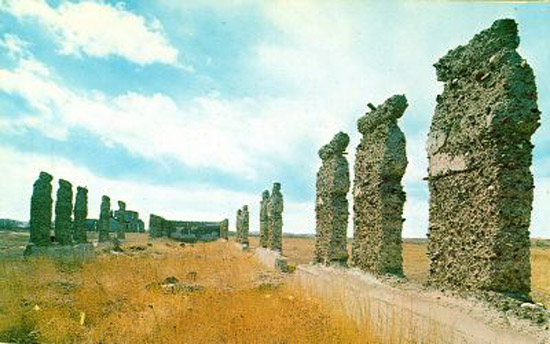
Ruins of Sergeants' quarters.
Between 1915 and 1937 various proposals for the preservation or use of the fort were put forth.
These included proposals to use the fort as a resort, military school, religious
retreat, tourist attraction, and a golf course. None successfully got off the
drawing boards. In 1925 the fort barely escaped total destruction by fire.
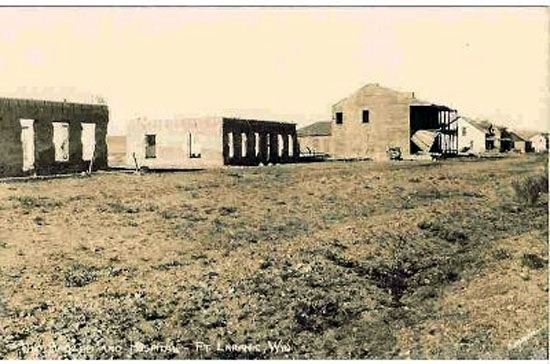
Ruins of Officers' quarters and Old Bedlam, approx. 1925
In 1936, the National Park Service expressed interest in designation of the
fort as a national monument if it would be donated to the Service. In 1937 the
State Legislature authorized the aquisition of the property at a price not to exceed
$27,000. A ceremony celebrating the acquisition at the fort was attended by, among others,
William Henry Jackson who was then 94 years old, Charles Nylen of Douglas who was a member of
two expeditions led out of the fort by General George Crook, and by Russell Thorp, Jr., son of a
former owner of the Cheyenne-Black Hills Express Co., operator of the famed Deadwood Stage.
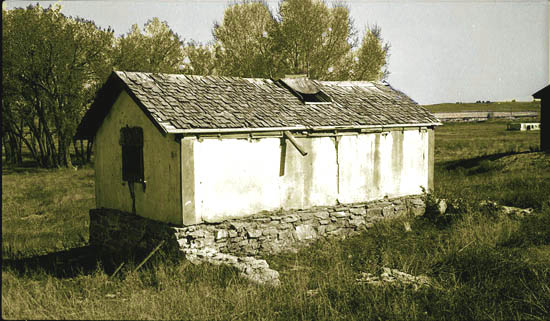
Remains of stable, 1943.
The building was estimated to have been constructed in 1881. At the time of the photo, at the end of the building away from
viewer a part of the wall had been broken out, the door frame was missing, and the
walls were cracked.
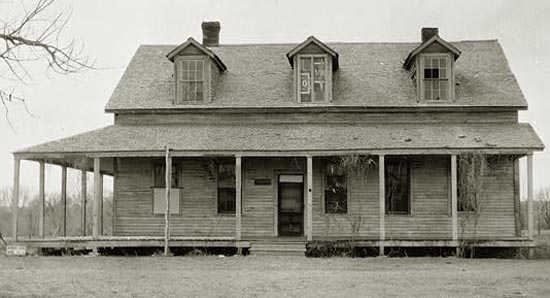
Officers Quarters, 1939.
Next Page: Ft. Laramie Continued, Privies, Restoration of buildings, Sutler's store, Old
Bedlam continued.
|